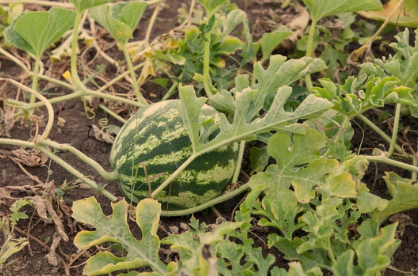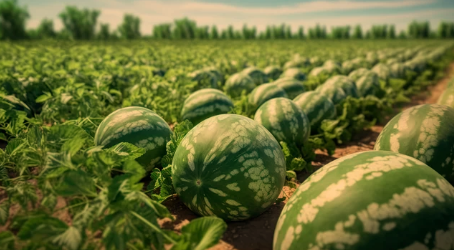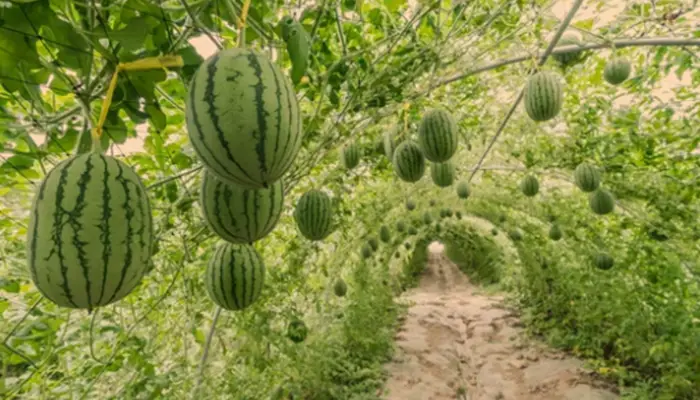When it comes to summer’s favorite fruit, the refreshing and succulent watermelon, one cannot help but wonder where this delicious treat finds its perfect conditions to flourish.
Bursting with flavor and juiciness, watermelons thrive in specific regions around the world where they receive the ideal combination of warmth, sunshine, water, and soil composition.
In this blog post, we will explore the prime locations where watermelons grow best, allowing us to appreciate the intricate connection between nature and this delectable summer delight.
Countries and Regions Where Does Watermelon Grow Best

Mediterranean Region
The Mediterranean region is widely recognized as a favorable environment for watermelon cultivation.
Countries like Spain, Italy, Greece, and Turkey benefit from warm climates, long growing seasons, and fertile soils that contribute to the fruit’s exceptional taste. The abundant sunshine and mild winters of this region provide the necessary conditions for watermelons to ripen to perfection, resulting in juicy, sweet, and aromatic varieties.
Southern United States
The southern United States, particularly states like Georgia, Texas, Florida, and Alabama, boasts some of the best watermelon-growing areas in the world.
The hot and humid summers, combined with fertile soils and access to irrigation, create an ideal habitat for watermelon cultivation.
These regions often have a long growing season, allowing the fruit to reach its full potential and develop the signature sweetness that watermelons are known for.
Central and South America

Where Does Watermelon Grow Best
Watermelon production in Central and South America, particularly in countries like Brazil and Mexico, is significant due to the favorable climate and vast agricultural land.
The tropical and subtropical climates offer high temperatures and ample rainfall, which contribute to the growth and development of watermelons.
These regions produce a wide variety of watermelon types, including the iconic crimson flesh and seedless varieties.
North Africa
North African countries, such as Egypt and Morocco, have long been renowned for their watermelon cultivation.
The arid climate and fertile river valleys, such as the Nile, provide an oasis-like environment for watermelons to thrive.
With an abundance of sunlight, warmth, and well-irrigated fields, North Africa has become a key player in the global watermelon market, producing high-quality fruits that are often exported to other parts of the world.
Southeast Asia
Several countries in Southeast Asia, including Thailand, Vietnam, and Cambodia, have become significant watermelon producers.
The tropical climate in these regions, characterized by high temperatures and humidity, supports the growth of watermelons throughout the year.
Farmers in these areas have mastered the art of cultivating unique and flavorful watermelon varieties, catering to both domestic and international markets.
Australia
Certain parts of Australia, particularly Queensland and New South Wales, provide suitable conditions for watermelon cultivation. The warm climate, ample sunshine, and access to irrigation make these regions conducive to growing high-quality watermelons.
China
China is one of the largest producers of watermelons globally.
The country’s vast agricultural lands, particularly in the northern and southern regions, provide the necessary warmth and water resources for successful watermelon cultivation.
Chinese farmers have developed various cultivars and have mastered techniques to maximize yields and quality.
India
Watermelon cultivation is widespread across different states in India, with Uttar Pradesh, Andhra Pradesh, and Maharashtra being major contributors.
The country’s diverse climatic zones, ranging from tropical to subtropical, provide suitable conditions for watermelon growth.
Indian farmers produce a wide range of watermelon varieties, catering to both domestic consumption and export markets.
Southern Africa

Countries like South Africa, Zimbabwe, and Mozambique have favorable conditions for watermelon cultivation.
The warm climate, coupled with the availability of irrigation from rivers and dams, supports the growth of watermelons in these regions.
Southern Africa has emerged as a significant supplier of watermelons to both local and international markets.
Middle East
Certain Middle Eastern countries, such as Israel, Jordan, and Saudi Arabia, have successfully cultivated watermelons.
Despite the arid and dry conditions prevalent in these areas, farmers utilize advanced irrigation techniques, such as drip irrigation and hydroponics, to provide watermelons with the necessary moisture.
These innovative practices allow watermelon cultivation to thrive even in challenging environments.
It’s fascinating to see how watermelons adapt and grow in diverse regions worldwide, showcasing the fruit’s versatility and resilience.
The ability to cultivate watermelons in various climates and regions ensures a steady supply of this beloved fruit to meet global demand and delight taste buds around the world.
Warp Up
In areas with the ideal chemistry of climate, soil, and water supplies, watermelons thrive.
Nature has offered a variety of regions where watermelons grow best, from the Mediterranean region to the southern United States, and from Central and South America to North Africa and Southeast Asia.
The flavor and freshness of these delectable fruits are enhanced by the unique characteristics of each place, making watermelon a well-liked and widely consumed pleasure all around the world.
So, the next time you enjoy a luscious slice of watermelon on a hot summer day, go back to the amazing journey it made to get to your plate from its ideal growing locations.




